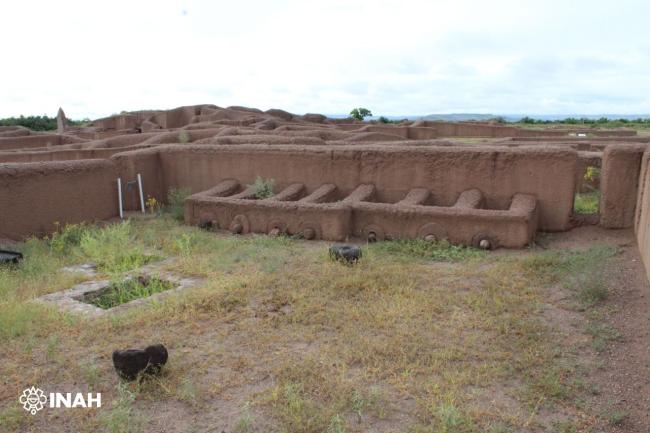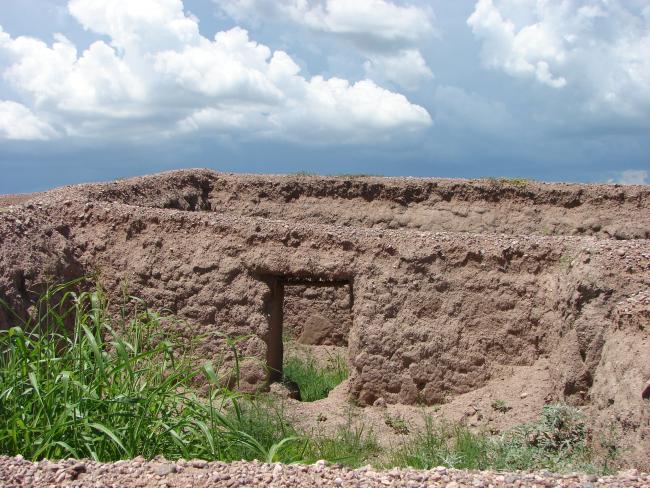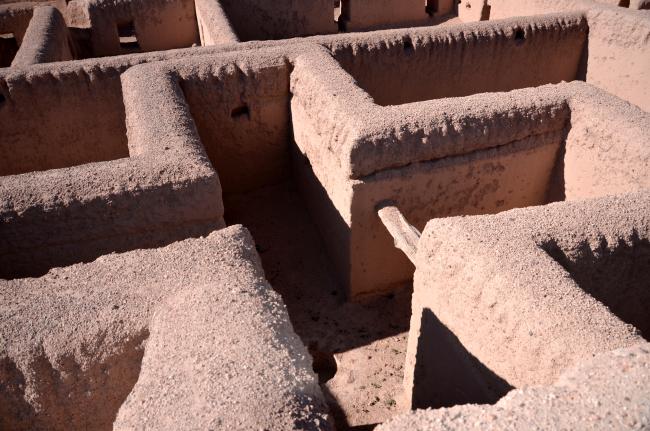
Arquitectura civil
Estructura
The urban fabric of Paquimé reveals a sequence of constructions built over more than four hundred years of history. Some units were built during the early phases of the Middle Period (ca. 1200-1300) and were significantly modified at a later date.
Walled House: The Walled House was built in the Middle Period and has undergone several modifications at different times.
The House of Columns: It is an area of courtyards and rooms that came to have several floors, perhaps up to four or five. In some walls it is possible to appreciate the traces of the tapancos and floors. The tallest structure, similar to an obelisk, is identified as “El Pilarón”, although it is actually the corner of a multi-story building that, for unknown reasons, was stronger than the others. In the southern walls of the Casa de las Columnas, the construction details are very clear: the walls were built by filling a wooden structure with damp earth that was then tamped down; this technique is similar to that of today's cast or poured cement. It should be noted that this adobe did not have straw, that is, even if we call it “adobe” it does not have the form of a partition wall or some kind of catalyst.
The House of the Macaw: The House of the Macaw was probably the residence of those individuals described by Father Sahagún as “feather merchants”, a guild that in Paquimé was dedicated to the breeding of macaws. It is located in a central part of the city and its main entrances are directly linked to the Central Plaza. In this small apartment complex, only one story high, there are still the niches or boxes in which these animals were bred, as well as other facilities for their management.
House of the Dead: Archaeological evidence in the House of the Dead (Unit 12) suggests that its inhabitants were healers, as they performed rituals related to death. The rooms contained a large number of burials, both individual and multiple, which were associated with offerings (such as ceramic drums and other objects); as well as objects related to ceremonies in which macaws were used.
House of the Skulls: The House of the Skulls (Unit 6) was so called because of the finding of a mobile made with human skulls in one of its rooms. It is considered that it was formed by 198 rooms, so it could have been inhabited by around 500 people.








